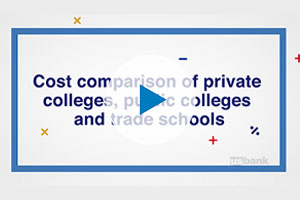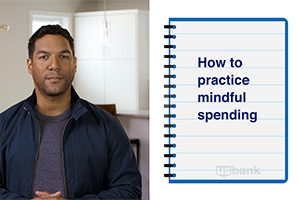Planning for the future of a loved one means factoring in financial decisions. Here’s what to expect when selecting and setting up an account.
When planning for the financial future of yourself or a loved one, there are several different approaches to take. The choice that makes most sense will vary based on your personal circumstances – perhaps a family member has special needs and a limited ability to make decisions regarding their finances, or an aging parent is starting to require more assistance and oversight. In these situations, guardianship, power of attorney (POA) and joint checking accounts can help ensure their money is managed securely. Here’s what you need to know about each option, plus what to expect when setting up their account.
What is a guardianship?
A guardianship is an appropriate choice for an individual who is incapacitated, or unable to understand and make decisions for themselves. This person will become a “ward” of the selected guardian who is appointed to legally act on their behalf. Typically, the guardian is a family member or close friend. They have the same rights and responsibilities as a parent does for their minor child, making guardianship on a bank account similar to a minor savings account. “Guardianships are treated the same way as minor accounts – there’s just a legal document present. They act the same as a minor checking or minor savings,” explains Holly Kevelin, a client relationship consultant for U.S. Bank.
Because the ward is typically a minor, a ward of the state, or unable to manage their own funds, they won’t have permission to transact business on the account. This includes activities like internet banking and withdrawals and transfers – they won’t manage or have access to the funds. Instead, the guardian will manage the money, and the debit card on the account will be in their name.
Setting up guardianship on a bank account
The first step of setting up a guardianship for a loved one is legal approval, which varies based on the state where you live. State forms and templates for guardianship and POA are often available online. Karen Gutiérrez, a senior content editor at U.S. Bank, recently began this process for her child, initially applying in court to be their guardian. She started by making a visit to her local courthouse’s family court clerk, who provided guidance. After receiving a packet of materials from the family court clerk office, she sought assistance from the county attorney’s office. “They were able to answer all of my questions about the forms and how to fill them out,” says Karen.
Once the client has their certified original court documents, they can bring them into a bank branch for review. Because the requirements are slightly different between states, the bank staff takes special measures to follow exactly what the paperwork states. “I will scan a copy of original, email it to our support team, get a case number and write it down,” says Holly. “After I get the go-ahead that everything looks good, we get the client’s identification information, create the guardian’s profile, create the principal non-signer’s account and get everything set up.”
The bank will then keep a copy of the guardianship paperwork in their legal file for future use, such as if a new account needs to be opened at a later date. This process of setting up the bank account takes about an hour. After the application is approved and the account is active, the agent can take any of the same actions they would take on a personal account on behalf of the principal’s account.
Materials to bring to the bank
When setting up a bank account with a guardianship, the appointed guardian will need to bring their driver’s license, state ID, passport or government issued ID, along with personal information like their social security number, date of birth, address, phone number and contact details.
In addition, the bank will need information about the ward with the guardian, including their date of birth, social security number and address. The bank will also need access to the legal guardianship documents.
What is a power of attorney (POA)?
When arranging a POA, an individual called the “principal” selects someone else, known as the “agent,” to make financial decisions for them. In this situation, a legal document is created, authorizing the agent to manage the principal’s assets and finances. However, the principal is required to fully understand the reasoning for the POA and must be actively involved in setting up and signing the document. Some of the actions an agent can take with POA include filing taxes, selling property and managing day-to-day bank account operations. Some of the actions an agent can take with POA include filing taxes, selling property and managing day-to day bank account operations.
Choosing beneficiaries
A POA can be a wonderful way to act on behalf of someone who needs your assistance making decisions due to a long-term health issue or advanced age. However, it’s important to know that the assets are never legally filed under the agent’s name. This means that when the principal passes away, their access to the account ceases. “We put a hold on account immediately once we are notified from the state that there's an obituary, and we can't release it,” says Holly.
Because POA ends when the principal dies, it’s important that they choose beneficiaries of the account as well. An account owner may have as many beneficiaries as they’d like, and they need to inform them in advance. In the event that the account owner passes, the beneficiaries will then know to claim their portion of the money and bring the account owner’s name, social security number, date of birth and address to the bank. These “payable on death” arrangements are a separate process from POA, so the account owner can appoint the same person for both purposes, or they may choose one person to manage the account while they’re living and select a different beneficiary.
When a joint account makes sense
An alternative option for an account involving two parties is a joint account. Unlike a guardianship or POA, both people have access to the funds and can make transactions. This can be a good solution for someone who isn’t able to manage a bank account entirely on their own, but still seeks some level of autonomy and wants to be involved in the spending and saving process. “If you wanted to have a joint account, ultimately you’re both responsible for whatever happens on that account,” says Holly. “They would have their own debit card in that fashion.”
Because of this access, it would be wise for the second party to supervise how the funds are being used. “If you wanted [an individual] to have a little more freedom but you're still very much managing the account, you can set up really specific alerts and then transfer on your online mobile app,” suggests Holly. This type of arrangement allows two people to share one account and makes sense if you’d like to help someone gain experience managing their own funds while still being able to monitor the activity.
For more financial guidance when you need it most, visit these resources.









































































































































































